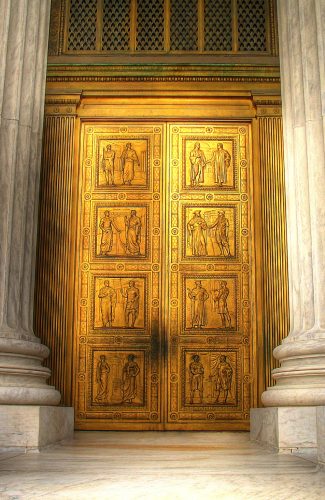Then, decades later, a team of researchers led by Professors Lee Epstein and Andrew D. Martin at Washington University in St. Louis received additional funding to modernize the database and to backdate it to the Court’s first decision in 1791. Today’s version of the Database houses 247 pieces of information for each case, roughly broken down into six categories:
- Identification variables (e.g., citations and docket numbers)
- Background variables (e.g., how the Court took jurisdiction, origin and source of the case, the reason the Court agreed to decide it)
- Chronological variables (e.g., the date of decision, term of Court, natural court)
- Substantive variables (e.g., legal provisions, issues, direction of decision)
- Outcome variables (e.g., disposition of the case, winning party, formal alteration of precedent, declaration of unconstitutionality)
- Voting and opinion variables (e.g., how the individual justices voted, their opinions and interagreements)
The U.S. Supreme Court Database (SCDB) is a comprehensive, public, multi-user data resource containing information about every case decided by the United States Supreme Court from its first decision in 1791 to today. The Database is arguably the most important single data source in empirical law and social science. Virtually all systematic analyses of the contemporary Supreme Court and its members have relied on it. This holds for research conducted by social scientists and their graduate students and, increasingly, by legal academics; and it holds for quantitative and qualitative studies, as well as those more descriptive in nature. In fact, several inventories of peer-reviewed journals show that it is the rare article on the Court that derives its data from an alternative source. Monographs published by top presses also regularly rely on the Database, and the many numerical studies of the Court receiving public attention in recent years have made liberal use of the data it houses. By the same token, journalists seeking to illuminate dimensions of the Court’s work regularly rely on the Database; indeed, Linda Greenhouse, the Pulitzer-prize winning reporter, once referred to it as “a computerized treasure trove…created under a grant from the National Science Foundation,” and has cited it (or research relying on it) in her writings.
In short, the U.S. Supreme Court Database has not just helped fill gaps in our knowledge. It is one of those rare creatures in the law and social science world: an invention that has substantially advanced a large area of study, inspiring research by scholars hailing from no fewer than three and as many as seven disciplines.
